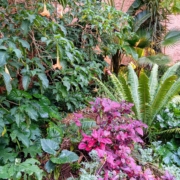Valencia parks, a city to walk
Valencia is a flat city warm all year long due to the Mediterranean climate. These are the best conditions for walking and enjoying outdoor, specially if you are on holidays and moving by bike across the city. We have selected our favourite parks that you can visit as you move around. Some are historic places and some others have botanical interest, but all them are wonderful spots to enjoy.
Jardines de Monforte
These are historic gardens that stand out for their peace despite being in the middle of a busy area of the city. They are perfect to disconnect and find calm in the beauty of its neoclassic spaces with more than 30 marble statues, flowerbeds, fountains…
The garden has its origin in an old orchard that was transformed into a neoclassical garden by the Marques de San Juan to confort his wife after the death of his only son. At that time the garden, along with other disappeared nearby parks, was part of a walking itinerary for the Valencia bourgeoisie of the XIX century called Volta del Rosignoll in valenciano (nightingale walk).
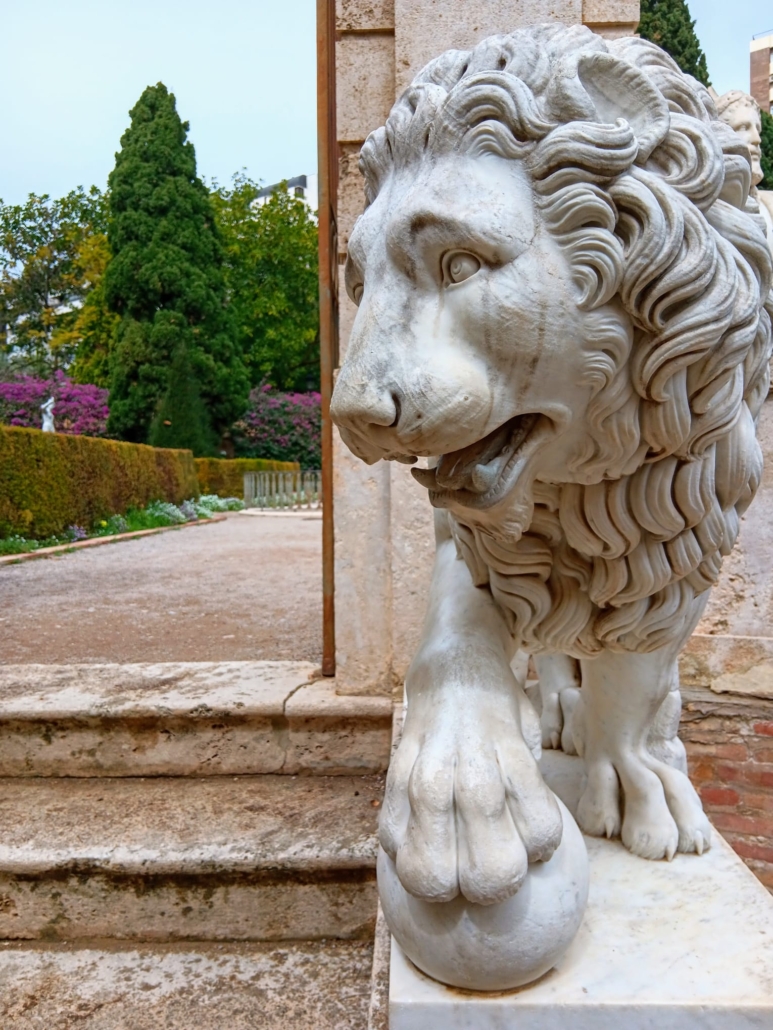
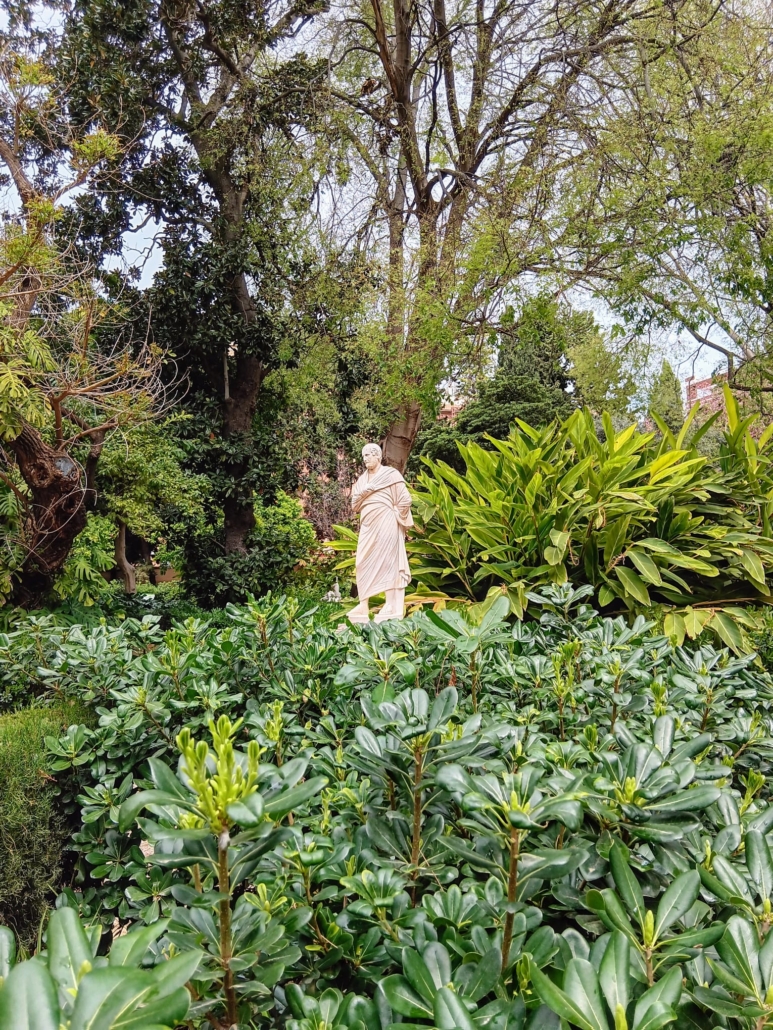
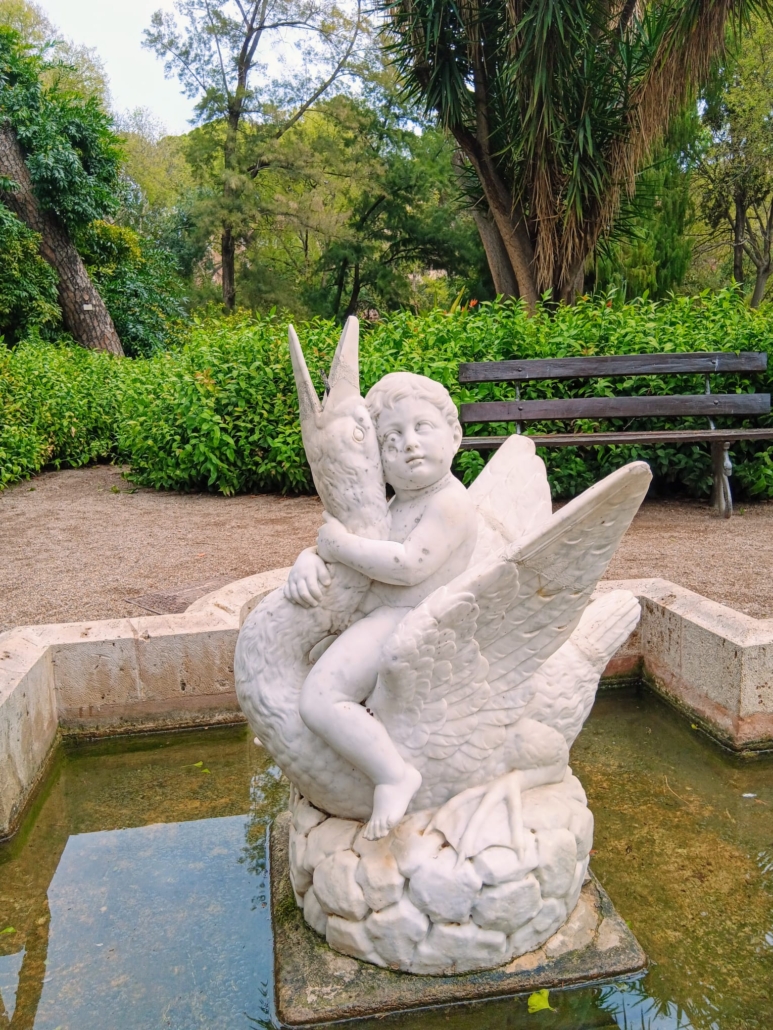
As you get into the park, a regular place for weddings in Valencia, you find two lions at the sides of the portal. They were done for the stairs of the Congreso de los Diputados (Spanish parlament) in Madrid, but were considered too small for the relevance of the place, even compared to little dogs, and sent to the Congress storehouse till the Marques de San Juan rescued them and took them to Valencia.
This is our favourite park in the city and additionally has a a lot of friendly cats as permanent residents. It is open all days of the week from 10,00 to 18,00 and it is free.
Jardin de Viveros

The Jardín de Viveros, also called Jardines del Real, was once the courtyard of the royal palace used by the kings and queens of Aragon and Spain during their visits to the city, and the regular residence of the viceroys. It was demolished in 1810 during the Independence War by the Spanish troops, to avoid the French army to take it and use it in the attack to the city.
The park hosts almost 2300 planted specimens of 167 different botanical species.
Our favourite corners are the neoclassical flowerbeds that give access to the Museu Pio V. This museum houses a collection of Valencia paintings of different styles, including Renaissance altarpieces by artists such as Juan de Juanes. The museum is also housed in a former convent. Do not miss the beautiful courtyards of different artistic periods.
You can take advantage of your visit to Los Viveros to enter the Museo de Ciencias Naturales of the city which is small but very diverse in terms of content. And if you are in Valencia during July we celebrate in the city a festival that in times was a bull fighting fair but now is also a cultural event. During the full month there are concerts in the Jardin and the experience is quite nice.
In the XIX century the Viveros Parc hosted the zoo of the city but luckily it was closed 20 years ago and now the animals live in the Bioparc, a more sustainable installation without cages (but still a zoo).
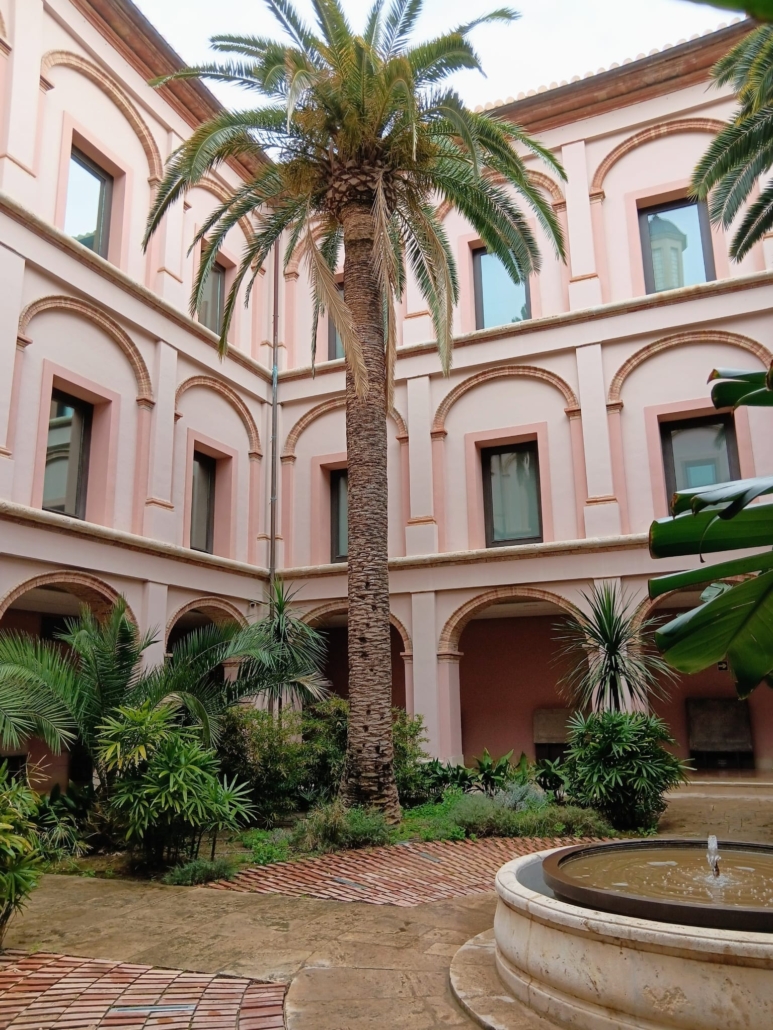
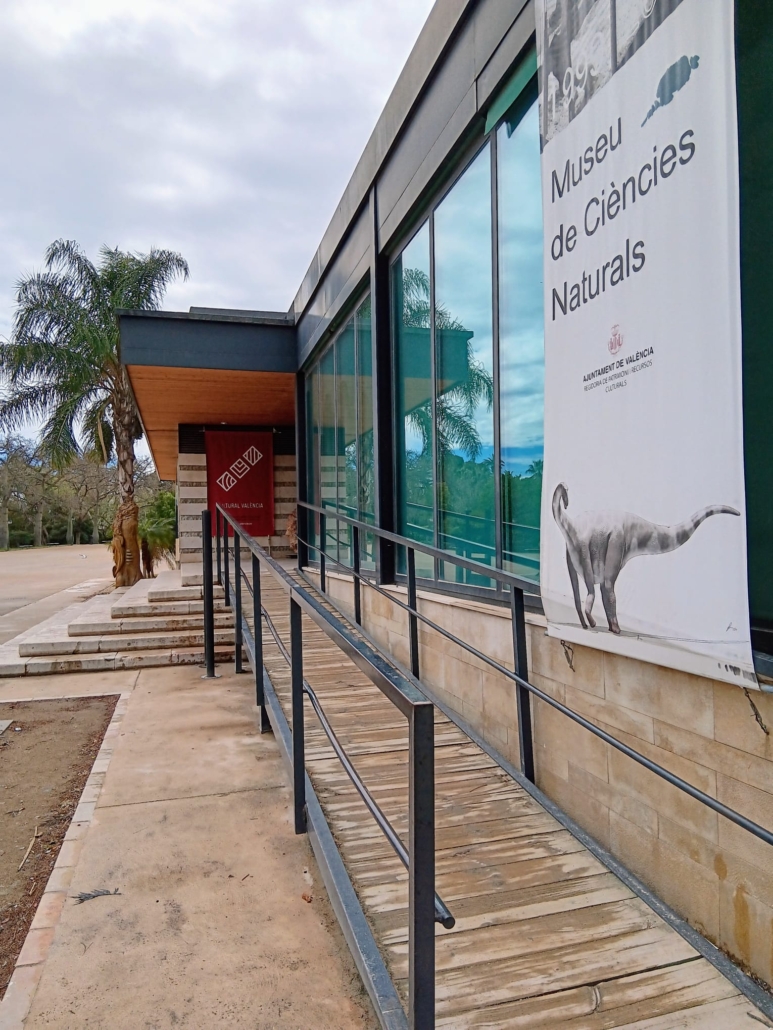
Los Viveros (as locals call the park) is open from 7,30 to 20,30. The Museo de Ciencias Naturales is open from 10,00 to 19,00 all week except Monday that is closed. Cost is 2€ (Sunday and days off it is free).
Jardín del Hospital
This is the least green and leafy of the list, as this space has several architectural elements that define it (and for which it was originally criticised). You will find the columns, and other archaeological remains at different levels, of the old hospital founded here in the XV century (the first hospital in the world for mental illness) and also part of the facade of the old University of Medicine along with sculptures, a chapel…
The combination of nature and architectural remains makes it very special. As an added value this park is next to the current Biblioteca of Valencia that well deserves a visit because inside have also been used architectural elements of the old hospital such as columns, and nearby is the MUVIM, a museum to promote modern and contemporary culture through temporary exhibitions of arts and fashion, which also has in its entrance hall an impressive model of the city of Valencia in 1704 based on the measurements of Pare Tosca, who was the first cartographer of Valencia.

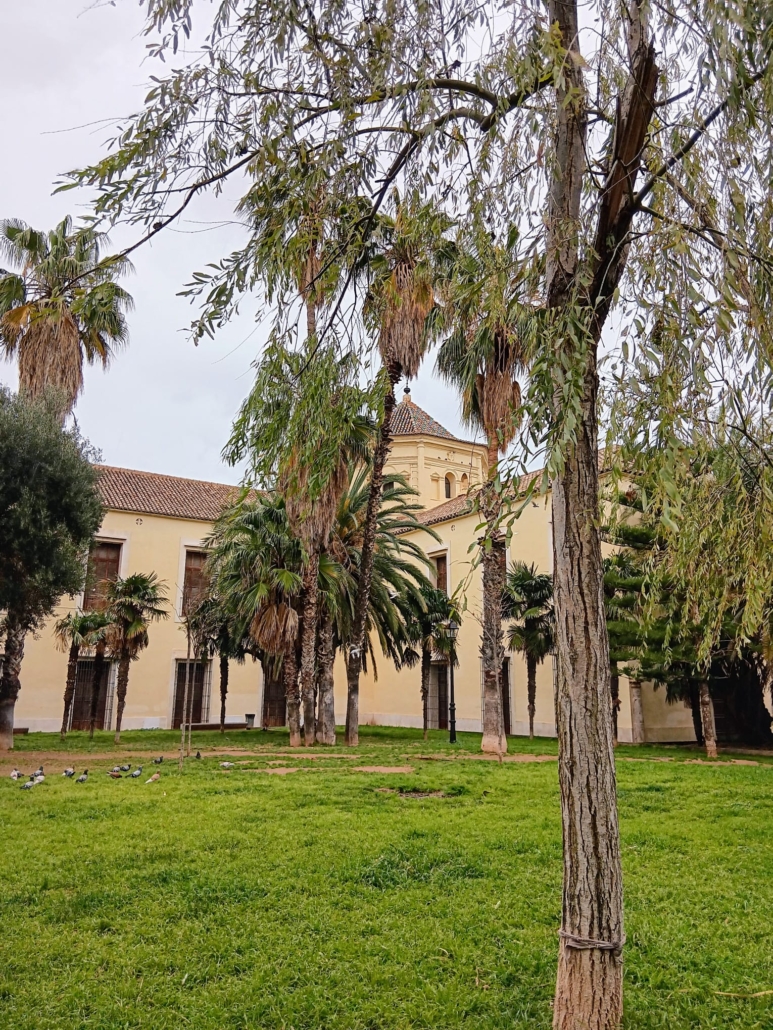
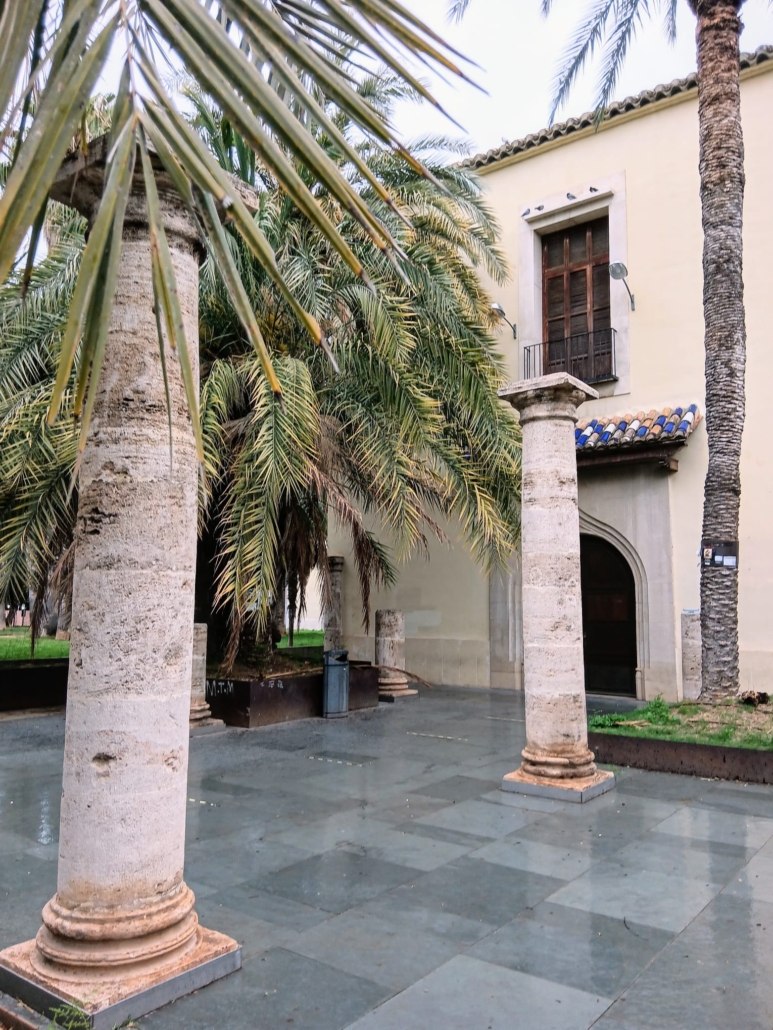
Muvim opens every day excepts Monday. Timing is 10,00 to 14,00 and 16,00 to 20,00, except Sunday that opens 10,00 to 20,00. The museum is free of charge.
Bombas Gens
The Bombas Gens was a factory of hydraulic pumps that became a shelter during the Spanish Civil War (1936-1939). Now is a private foundation that promotes digital arts and the space includes a restaurant of a prestigious chef from Valencia, Ricard Camarena
The garden, which occupies the old courtyard of the factory, is a space of vegetation arranged in a natural way following the art nouveau style, very lush and full of flowers. You´ll find there also some channels that refer to the irrigation ditches of the Turia with bronze bas-reliefs that give a special aspect to the garden.
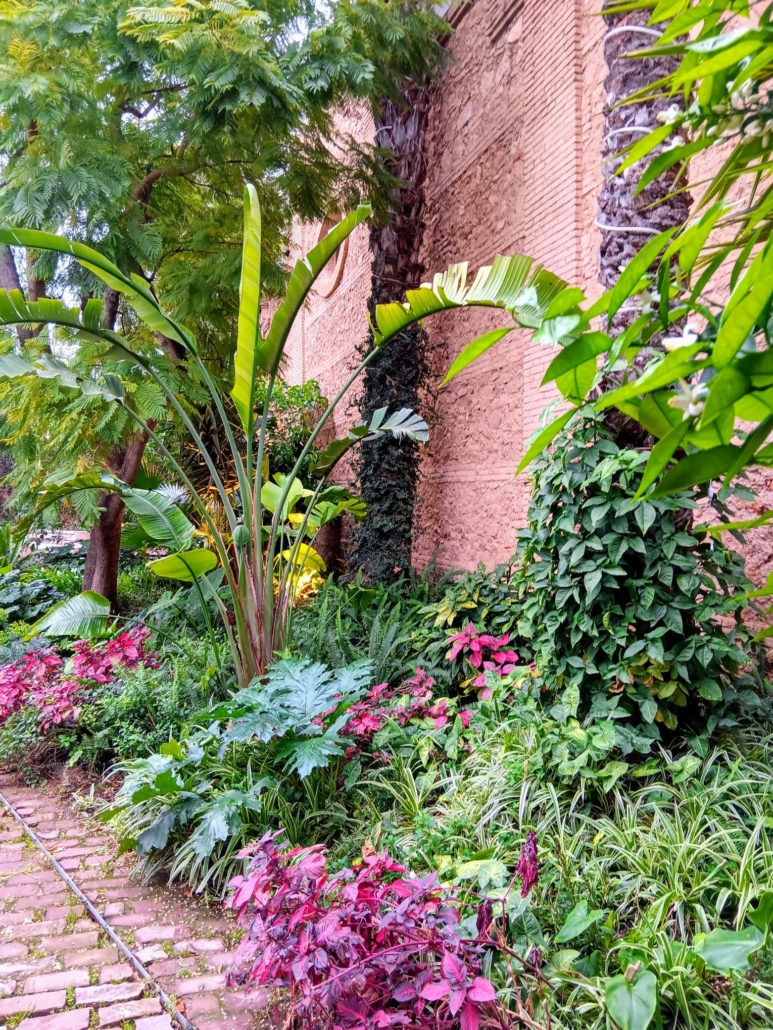
We love the combination of artistic space, historical monument of our Civil War, the gardens and a high class restaurant!

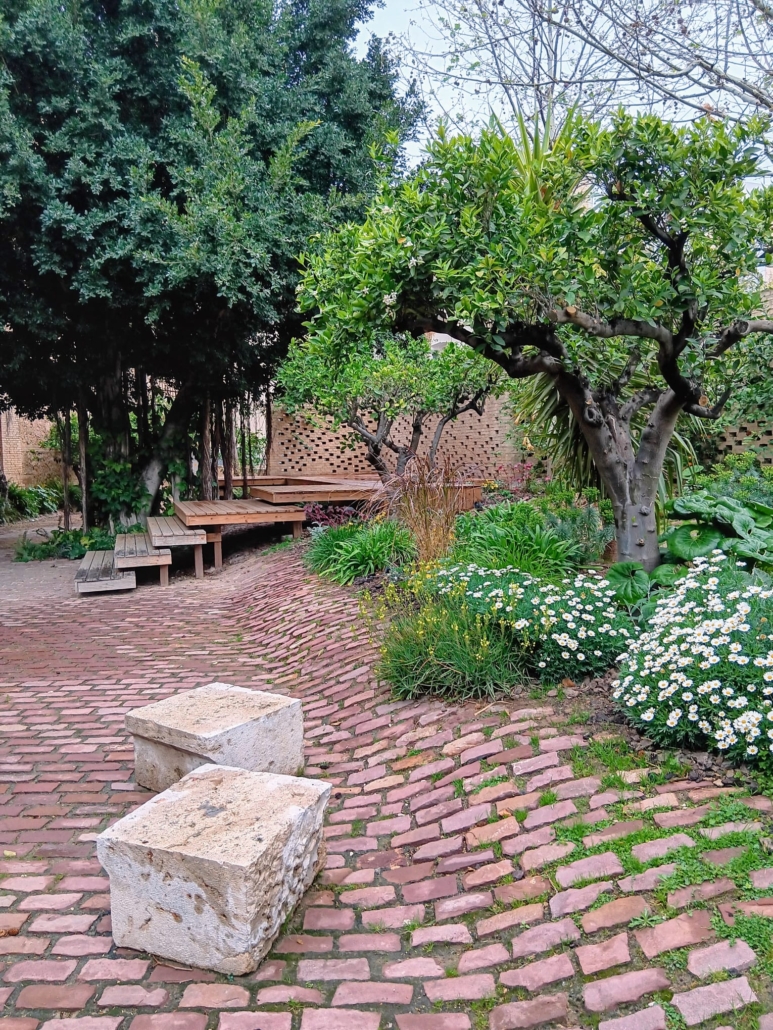
The center is open all the week long, except Tuesdays, from 10,00 to 21,00. To visit the garden you should book the guided tour bilingual in Spanish and English for 8 euros. The tour includes a visit to the shelter of the civil war, a XV century cellar and the garden.
Jardín Botánico de la Universidad de València
The Botanical Garden of the University of Valencia is a wonder not to be missed. For years it was threatened by the construction on an adjacent site of a building that could cast shadow on the garden but it was saved thanks to civil action and today we can enjoy 4ha with vegetation from five continents and various ecosystems. Its origin is in the garden of medicinal plants (hort de simples) of the University of Valencia that, after multiple locations in the city, was brought to this site in 1802 with the intention of becoming a modern botanical garden. Most of the garden green houses and buildings are from the 19th century, since in the 20th century, until its recovery in the 1990s, it suffered the consequences of the war, post-war period and the “Riua” (a massive flood in 1957 that was a huge disaster for the city).
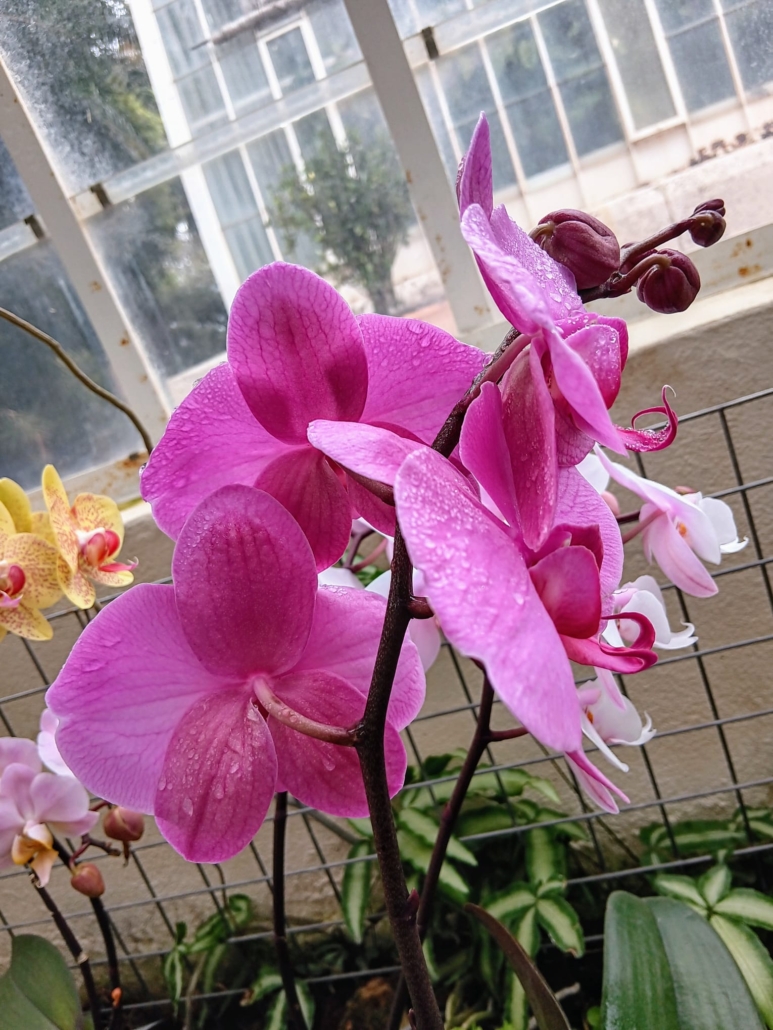
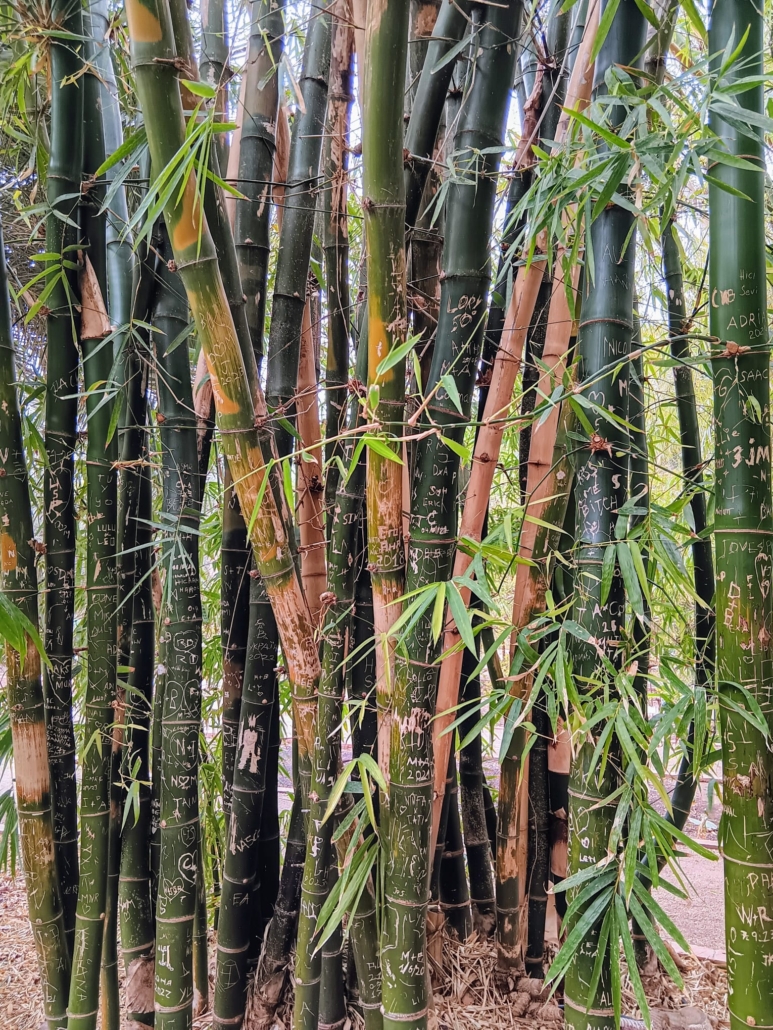

What we like most about the Botanical Garden is its colony of cats cared for and fed by an group of volunteers, Gatos del Botanico.
In addition, annex to the botanical garden is the Garden of the Hesperides, which contains up to 50 different varieties of citrus fruits. The Hesperides were three nymphs from Greek mythology who tended a garden from which Hercules had to steal a golden apple of eternal life in one of his famous jobs. The valuable apples here are transformed into our traditional oranges.
The Botanical garden is open everyday from 10,00 to 19,00 and the fee is 3€ except Tuesday from 10,00 to 14,00 that is free.
Jardín del Turia
The most famous and almost inevitable park, as it crosses the entire city, is the Jardín del Turia which was created 40 years ago when the mentioned before flood of the Turia River forced the decision to divert the water from the river to an artificial riverbed south of the city to prevent another flooding. This left the old riverbed dry inside the city and available for different uses. There was a proposal to make a highway but luckily the option to make a park park was decided in the end.
Along its 10km length there are many places to visit including the City of Arts and Sciences that is a masterpiece of contemporary architecture and host a sciences museum, an imax cinema, the biggest aquarium in Europe, a modern culture foundation-Caixa Forum and an opera house. You will find close the Palau de La Musica, a concerts hall, and a giant Gulliver that is an amusing park for kinds to scale and slide from.
But besides the cultural offer the river is a dream for sports lovers with running tracks, fields for futbol, rugby, baseball…
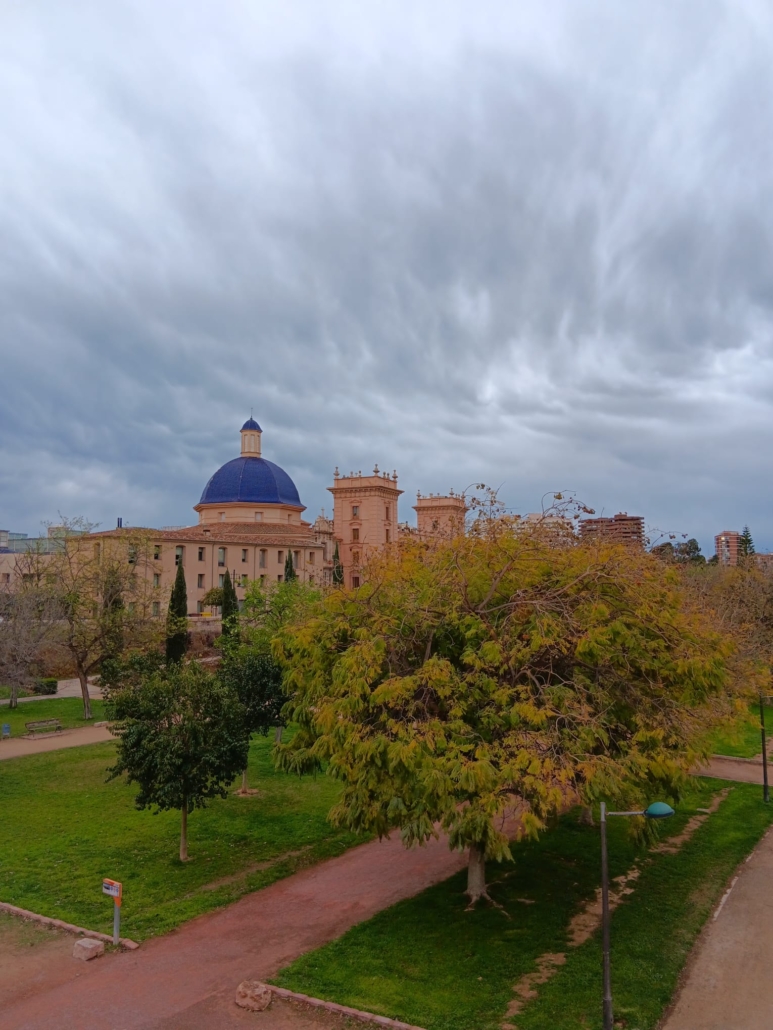
We recommend you to bike all the river long checking all the bridges to understand the city through them, with different stiles, names, materials and reflecting the periods of the Valencia history.
Very close to the sports fields, going up to the city on the Cuitat Vella side, is the Benlliure House Museum, of a saga of Valencian artists, which contains a courtyard designed by the painter José Benlliure himself. The courtyard with orange and jasmine trees is completed with beautiful tiles on walls and fountains. A beautiful quiet place to visit out of charge.
The CAC (Cuidad de las Ciencias y las Artes) has many different combined tickets in their website and is open all days of the week. The Caixa Forum also is open all week from 10,00 to 21,00 and it is free of charge. Find out the programmed concerts in the Palau de la Música here. The Gullliver park changes timing and hour depending of the season, but the info is here for you.
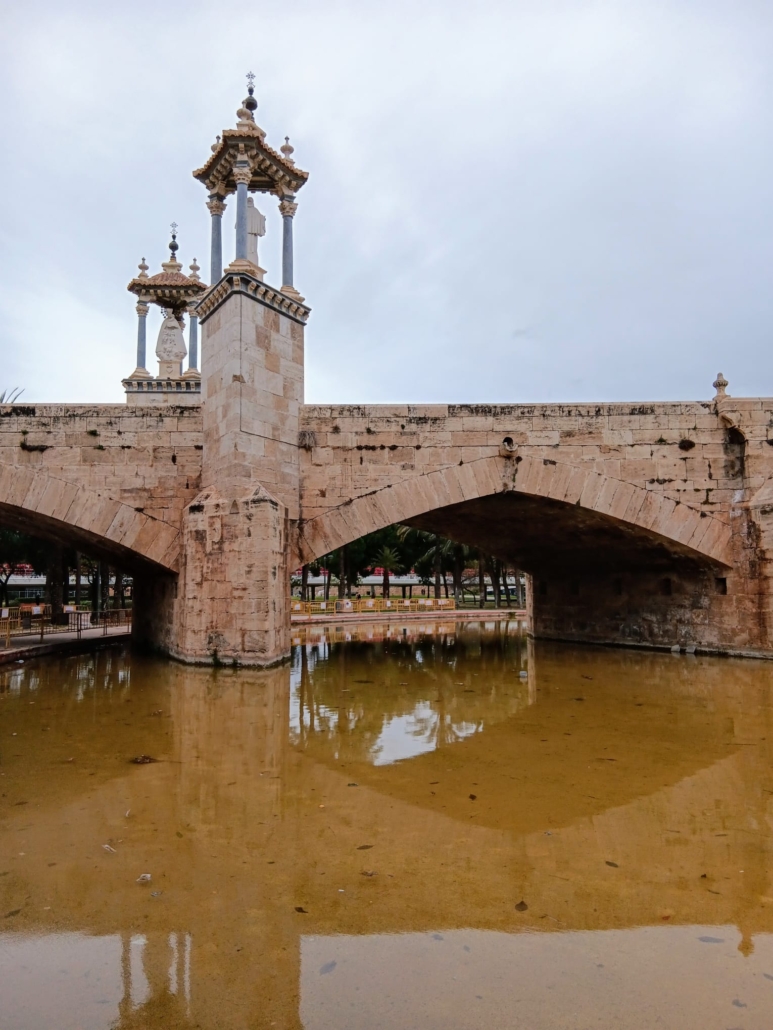

The logical order to visit the parks is to start in the Jardines de Monforte and continue to Los Viveros (Jardines del Real). Then go down to the River Turia and from there go to the Jardín del Hospital and the Botanical Garden. Finally Bombas Gens that is a bit far from the others.

